What is Fashion Style? Definitive Guide
In this article, we’ll explain the multifaceted nature of fashion style, its origins, usage as a reflection of human creativity, and its role in cultural expression and personal identity.
The guide incorporates scholarly insights, real-world examples, and visuals designed to offer a nuanced and comprehensive view of what fashion style truly represents.
What is Fashion Style?
A fashion style is a way of dressing with outfits depicting similar aesthetic roots – shapes, patterns, motifs, symbols, colors, and materials – adopted and reshaped by a subculture as its visual way of showcasing values, beliefs, group belonging, social status, and lifestyle.

In simple terms, a fashion style is a specific way of dressing in outfits (clothes and accessories) of unique aesthetics, patterns, motifs, colors, shapes, and fabrics characteristic of a culture or social movement, adopted and shaped by another subculture over time.

For an outfit to be cataloged as belonging to or representing a particular fashion style, the composing clothes, footwear, and accessories must share aesthetics and motifs representative of the subculture, it attempts to portray.
That being said, someone’s look or way of dressing could blend different fashion styles, not belonging to any particular subculture, colloquially called their “personal style.”
The Origin of Fashion Style
Originating from the Latin’ stilus,’ an instrument for writing or a form of expression, the term ‘style’ was initially used to describe – according to Hegel’s Philosophy of History – architecture, art performances, fashion creations, and later as visual expressions of a subculture.
A style is a distinctive way of performing an act or designing an object recognizable through its descriptive and normative usages, aesthetic patterns, motifs, materials, and colors, and present in various applications such as the rock style of music, the French style of cooking, the Gothic style of dresses, or the Victorian style of architecture.

In fashion, the most common way of depicting a style is through the artistic mix of clothing and accessories depicting patterns, motifs, shapes, cuts, and colors belonging to a subculture or more into outfits.
French philosopher and semiotician Roland Barthes states, “A fashion style is a form of aesthetic language and a mode of communicating statements by using the grammar of fashion.”
Fashion Style Vs. Aesthetic
Each fashion style has unique aesthetic roots. The clothes and accessories comprising the outfits always depict blends of aesthetics that form a fashion style.
Although wearing unbuttoned flannel shirts with basic white tees can be called “your personal style,” the clothes and accessories that form your outfit will always comprise aesthetics and patterns representative of fashion styles well-defined by stylists and historians.

For example, the Preppy fashion style emerges from the Ivy League academic subculture, drawing its aesthetic roots from British culture.
As such, the Preppy fashion style is characterized by tailored Navy blazers, plaid skirts, and argyle sweaters, reflecting a blend of academia with aristocratic refinement.
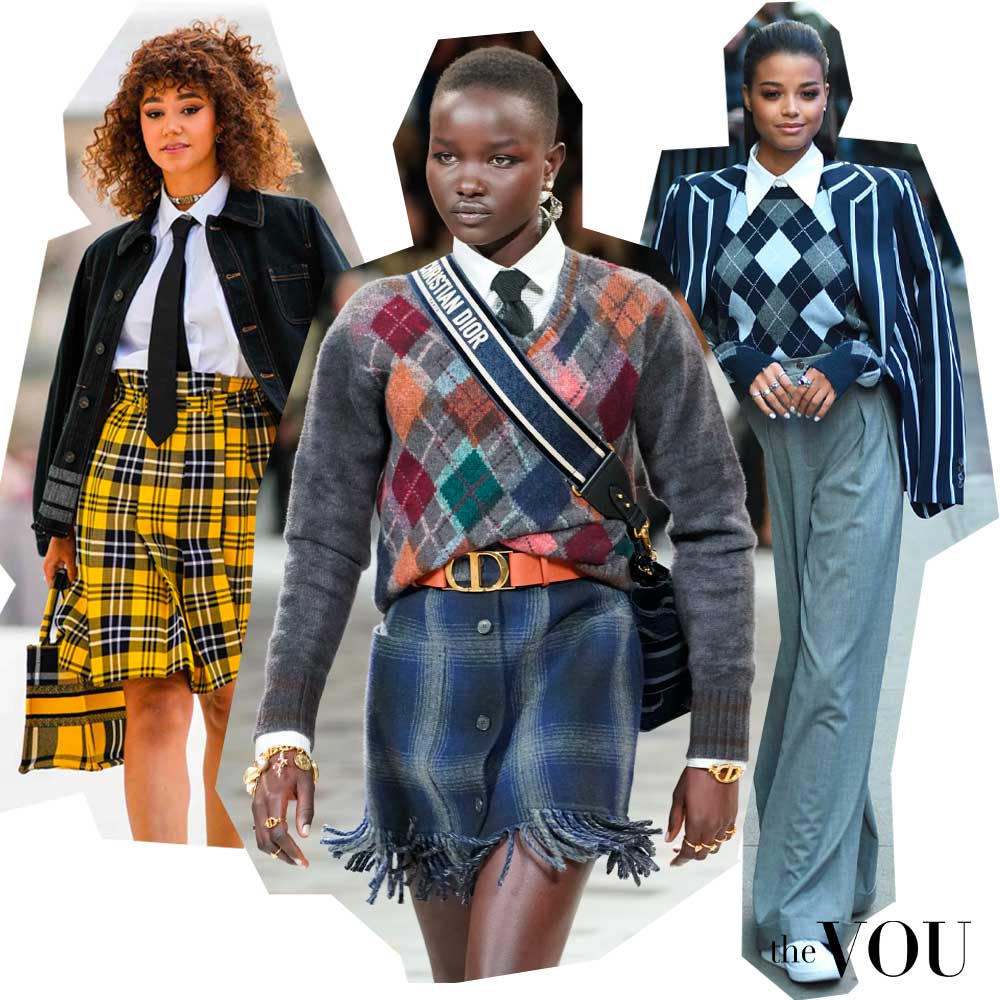
Similarly, the Goth fashion style depicts mystery and non-conformity through dark colors, lace, silver jewelry, and skull and cross motifs characteristic of the Goth subculture.

Or, the Y2K fashion style, named after the year 2000 and characterized by computer-era aesthetics and patterns like metallic fabrics, holographic prints, and cyber motifs reflecting the millennium fascination with technology.

These examples showcase how fashion styles are created by subcultures through the adoption, use, and blend of aesthetics, patterns, and motifs from previous subcultures into clothes and accessories (outfits) as forms of visual identity.
While each fashion style has unique aesthetic roots and origins, societal changes, emerging trends, and subcultures’ adoption of fashion styles lead to the creation of stylistic variations over time.
Historical Overview of Fashion Styles
From ancient Rome to the medieval Caliphate and the Industrial Revolution, most ways of dressing emerged out of necessity.
However, intentionally dressing in specific styles started in the Victorian era.
From the ‘Roaring Twenties,’ new fashion styles started to emerge in waves matching economic changes or social unrest.
From the Victorian era to the 2020s, each decade is represented by the five most representative fashion styles and their aesthetic roots (patterns, motifs, symbols, materials, colors).
Victorian Era (1837-1901)
Victorian Style – a dressing style influenced by the British monarchy and comprised of bustle gowns, high collars, lace, and velvet;

Art Nouveau Style – loose-fitting artisanal dresses with sinuous lines and floral motifs inspired by nature and art, floral motifs.

Sportswear Apparel – clothing with functional cuts inspired by emerging sports activities such as tennis and golf.

Day and Evening Looks – separate outfits for day/night with corresponding materials like cotton for day and silk for evening.
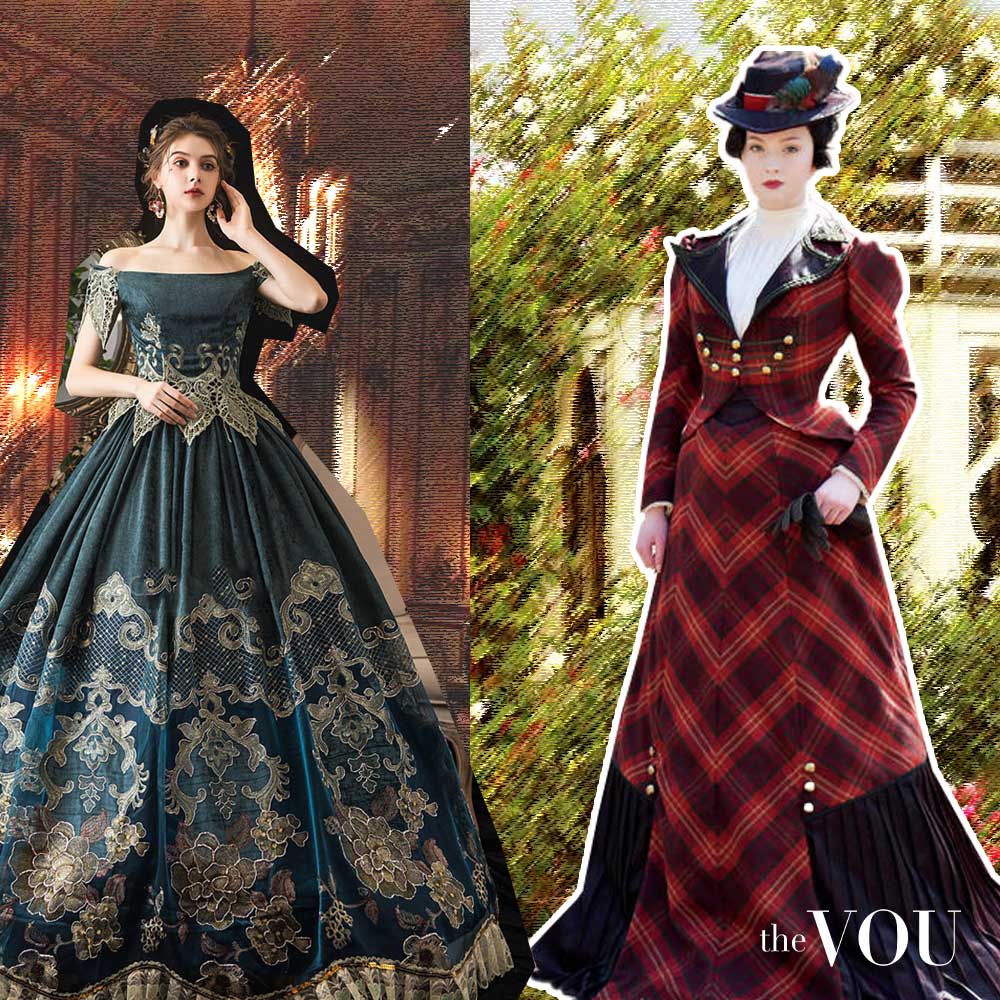
Mourning Attire – black dresses, veils, and accessories in dark tones reflecting the social importance of mourning.
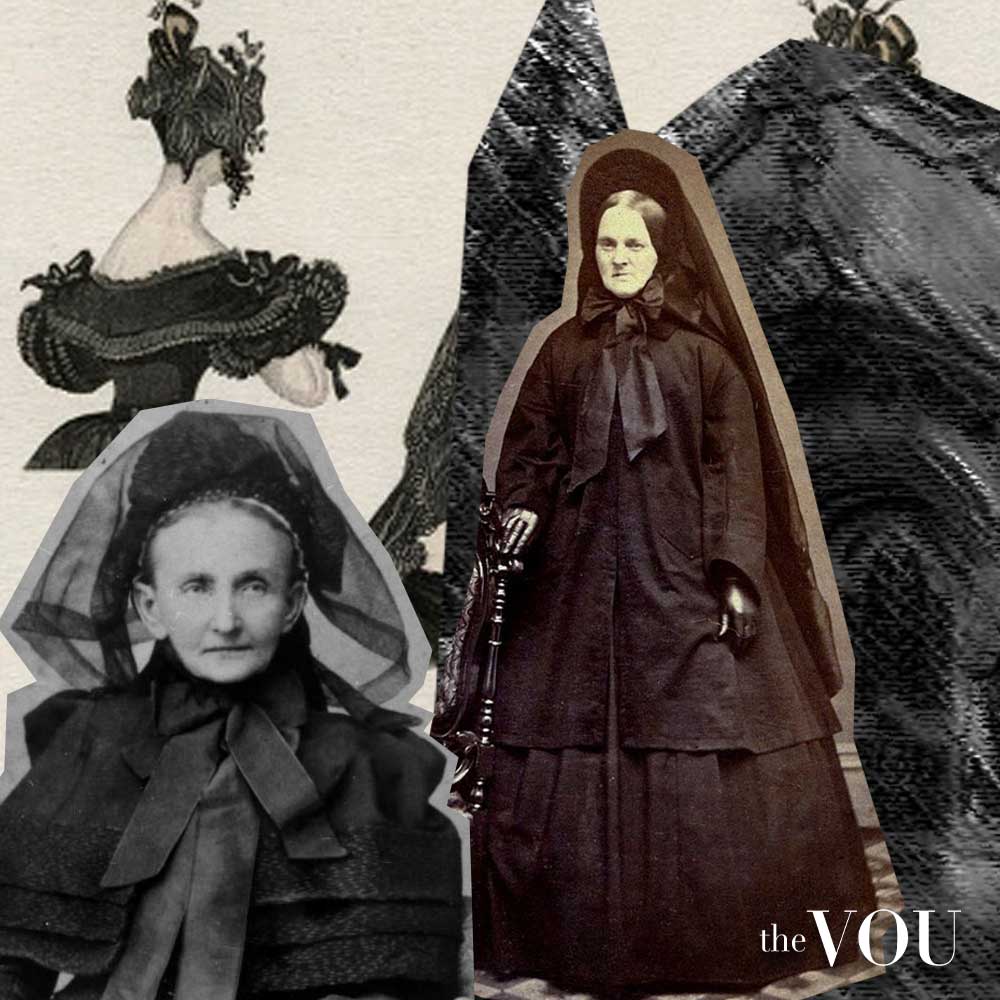
Edwardian Era (1901 – 1914)
Edwardian Style – high collars, s-shaped corsets, elaborate hats, intricate lace, and embroidery with aesthetic roots in the British nobility and King Edward VII’s attire.

Oriental Style – kimono-like dresses with oriental motifs from exotic materials and luxurious fabrics inspired by the growing fascination with Far East cultures.

La Belle Epoque Style – flowing dresses with floral motifs and natural forms still influenced by the art nouveau movement.

Tailored Style – tailored suits and jackets inspired by World War I military uniforms made from expensive fabrics.

Art Deco Artisanal Style – handmade garments with artisanal embroidery in geometric shapes and decadent colors, signaling the approach of the Roaring Twenties.

1920s
Flapper Style – short dresses with geometric patterns reflecting the Jazz Age, freedom, and emancipation.

Art Deco Style – clothes with zigzag patterns, sunbursts, and metallic motifs reflecting urbanization and modernity.

Coco Chanel Style – jersey dresses in monochromatic hues assorted with quilted bags showcasing practical elegance.

Formalwear Style – pinstriped tailored suits assorted with fedoras influenced by the growing Italian and Irish gangster look.

Hollywood Glamour Style – Bias-cut gowns from silk and satin assorted with fur.
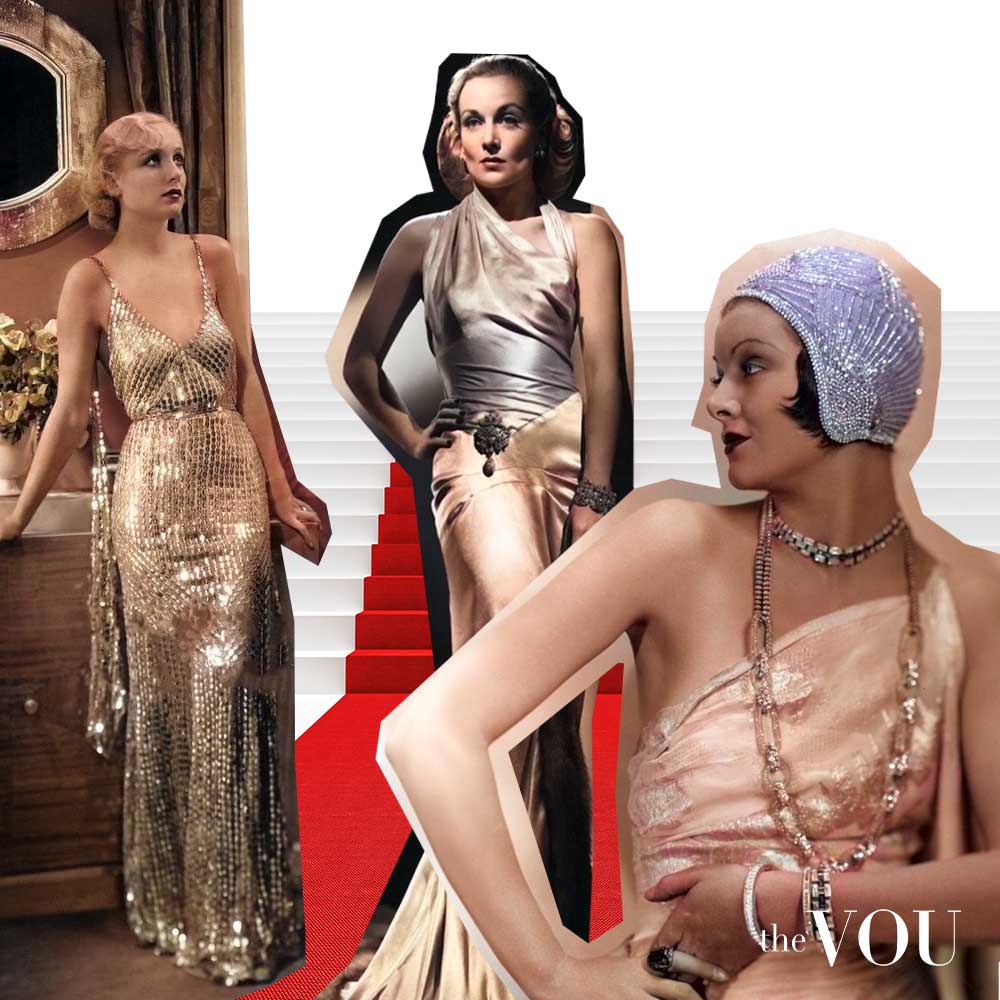
1930s
Hollywood Glamour Continued – elegant gowns in draped silk reflecting the stars of the cinema.

Menswear for Women Style – tailored suits from tweed and wool – see Katherine Hepburn’s fashion influence.

Escapist Style – beach pajamas in exotic prints and tropical motifs as a way to minimize the Great Depression.

Utilitarian Style – functional garments from sturdy fabrics reflecting the global economic hardship.

Surrealist Style – clothes with abstract motifs and mind-bending prints and colors representative of Salvador Dalí.

1940s
Wartime Style – utilitarian clothes in simple cuts from rationed fabrics and militaristic colors, influenced by World War II.

Pin-Up Style – high-waisted trousers and pencil skirts with polka dot patterns inspired by pin-up models.
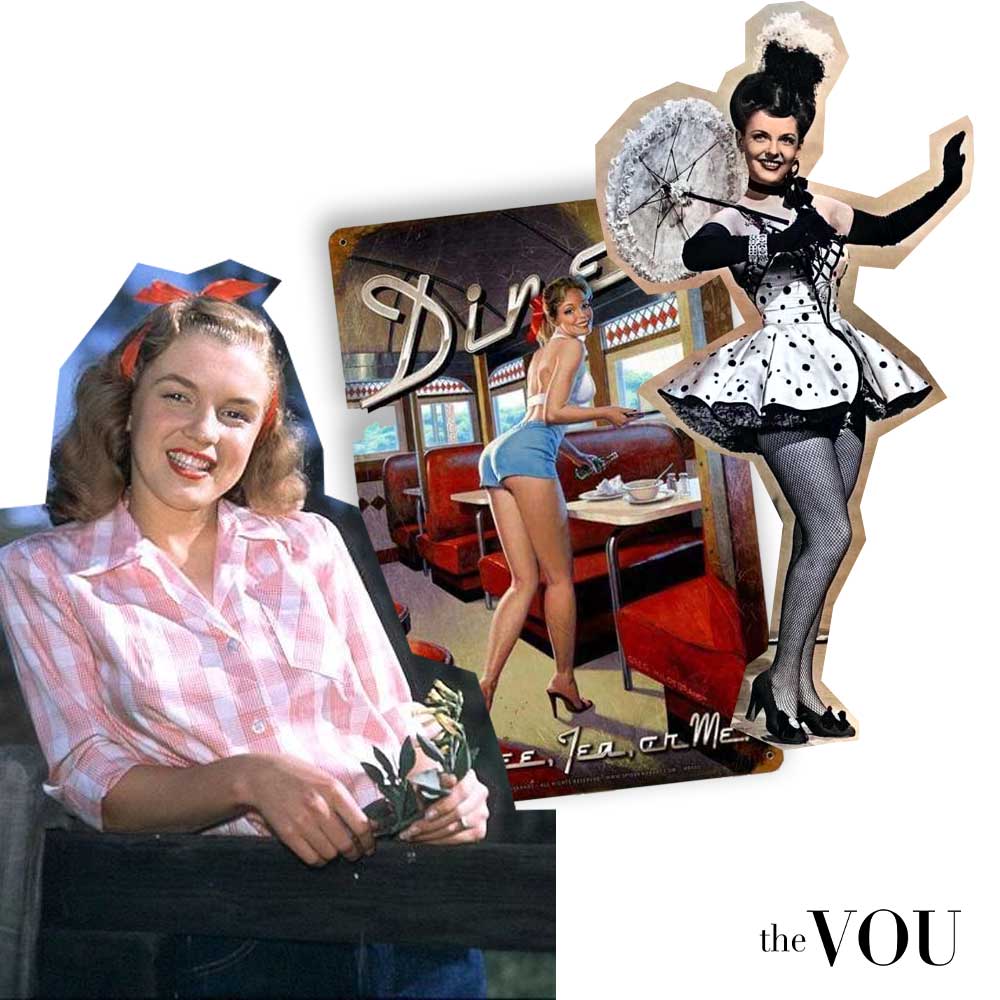
Movie Style – glamorous evening wear from satin and silk reflecting the growing influence of Hollywood stars.

The New Look by Dior – full skirts with cinched waists in floral prints reflecting the post-war optimism.

Zoot Suit Style – oversized jackets and wide-legged trousers with stripe motifs showcasing the rebellious youth.

1950s
Mid-Century Modernism Style – tailored outfits in abstract patterns showcasing a growing architectural influence among fashion designers.

Rockabilly Style – high-waisted jeans and leather jackets pointing to the emerging rock ‘n’ roll subculture.

Elegant Style – feminine skirts in pastel colors and fitted bodices – see Grace Kelly’s influence.

Beatnik Style – black turtlenecks assorted with monochrome berets pointing to the emergence of a literary subculture.

Preppy Style – Ivy League chinos, navy jackets, loafers, and sweaters with tartan and argyle patterns showcasing British aesthetic roots.

1960s
Mod Fashion Style – mini skirts, jackets with bold geometric patterns, and go-go boots as signs of growing feelings of rebellion against the status quo.
Hippie Style – tie-dye t-shirts, flared jeans, and accessories with floral and peace motifs showcasing a growing anti-war sentiment.
Space Age Chic Style – futuristic designs; metallics, vinyl; space exploration fascination.
Carnaby Street Style – unisex clothes in outrageous colors and pop-art prints depicting London’s artists and creatives.
Black Panther Style – all-black uniforms with berets and leather jackets as forms of political statement.
1970s
Disco Glamour Style – sequin dresses, platform shoes, and tops in shimmering fabrics reflecting the growing disco subculture.
Punk Rock Style – ripped tees, jeans, leather jackets with anarchistic symbols, chains, and safety pins showcasing the subculture’s rebellious nature.
Bohemian Style – maxi dresses in earth tones and shirts with ethnic prints depicting the movement’s ‘free of societal boundaries’ ethos.
Goth Style – black clothing with spiderweb and skull motifs and silver accessories inspired by Gothic rock musicians of those times.
Leisure Style – Leisure suits from polyester and shirts with wide collars for women and men, challenging the times’ gender norms.
1980s
Power Dressing Style – suits with oversized shoulder pads and shirts in herringbone patterns, showcasing women’s movement up the career ladder.
New Romanticism Style – ruffled shirts, velvet pants, and jackets with gothic motifs showcasing the nightclub culture.
Streetwear Style – tracksuits and baseball caps with graffiti prints pointing to the emergence of the hip-hop subculture.
Safari Style – khaki jackets and cargo pants with multiple pockets in African patterns.
Neo Preppy Style – colorful short chinos, polo shirts in pastel colors, sleeveless sweaters in argyle patterns.
1990s
MTV Generation Style – colorful vinyl jackets and pants, tees with slogan prints, rubber accessories, and lots of music video influence.
Grunge Style – flannel shirts, ripped jeans, tops in plaid patterns, and Converse shoes.
Hip-Hop Style – baggy jeans, baseball caps, loud logo t-shirts, and heavy golden chains reflecting the urban subculture.
Heroin Chic Style – outfits designed to create skinny silhouettes in dark or monochrome shades, depicting the emergence of edgy, alternative fashion.
Y2K Style – mini dresses, tess with kaleidoscopic prints and binary code patterns, jackets in metallic fabrics, and platform shoes depicting the millennial tech optimism – see the influence of Spice Girls.
2000s
Boho-Chic Style – layered dresses and skirts in paisley patterns, traditional Indian aesthetics, and ethnic jewelry – see Sienna Miller’s influence.
Emo Style – skinny jeans with studded belts and dark tops showcasing an emotive alternative to the punk subculture.
Designer Mania Style – outfits with oversized designer logos and flashy accessories at the top of conspicuous consumption.
Hipster Style – vintage tees with retro prints, shirts with ethnic patterns, oversized relaxed pants, and thick glasses depicting the subculture’s ironic vibe.
Athleisure Style – yoga pants, tees with sporty motifs, and comfortable sneakers depicting a growing fitness culture.
2010s
Normcore Style – normative dressing with unbranded clothes as an anti-fashion statement.
Streetwear Luxury Style – tees and jackets branded with designer logos, casual pants or denim, and high-end designer sneakers.
Sustainable Style – clothes and accessories from sustainable and recycled materials from recognized ethical designers like Stella McCartney showcasing the emergence of an eco-conscious movement.
Androgynous Style – unisex clothes and accessories in geometric cuts and unorthodox colors depicting sentiments and views of gender fluidity.
Digital Style – clothes with social media-inspired patterns like emoji prints and 3D-printed sneakers.
2020s
Cottagecore – flowy dresses from natural materials with pastoral aesthetics, floral motifs, and lace, romanticizing rural living.
Techwear – functional garments from smart materials and with cyber patterns in reminiscence of Y2K and Cyber styles showcasing technology integration.
Health-Conscious Style – protective outfits and masks reflecting global health concerns.
Revived Aesthetics Style – the 2020s have seen a resurgence of traditional fashion styles and the selective adaptation of patterns, motifs, materials, and colors to contemporary trends to create a nostalgic yet fresh appeal.
Virtual Fashion Style – digital clothing made to be worn in augmented, virtual, and mixed-reality environments – at least for now.
source https://thevou.com/fashion/style/
Comments
Post a Comment